In the Alters’ World (and the series of books found here), creatures of legend reveal themselves to the world. Born through genetic abnormalities, defects and mutations, the Alters have lived for centuries as outcasts of human society, hiding their true nature from the world while colorful stories have been written by many to describe what they’ve seen. How are these creatures different from what was described in the stories? What relationship do they have with humanity? Every entry of the Alterpedia will delve into a new creature from around the world. This week we cover:
Ogre-Kin
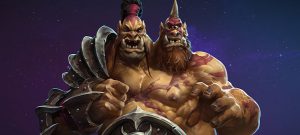
Spoken of in fairy-tales and epic fantasy alike, Ogres and Orcs have a long history as the savage brutes of our fiction. Though today generally depicted as two very unique races, the words were once actually interchangeable until more modern entries began to differentiate the two. Still, despite this modern division, the truth remains that they share much in common. Large, ugly brutes with a taste for human flesh, these creatures torment and terrify those who manage to stumble upon them. Whether it be one lone Ogre sitting upon a throne or an entire army of Orcs storming the gates. These creatures stand as intimidating figures no matter their setting.
But how savage are they really? How true are the stories of their immense size and strength? How much like an onion are they really…?
Appearance
Mythology
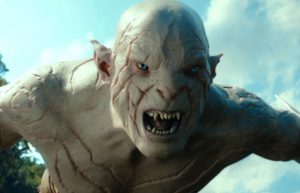
Large and slightly deformed humanoids, the Orcs and Ogres of lore were immense savages with abnormal bodies. They often had larger heads and arms, tusks and hair, like behemoth cavemen with terrible under-bites. Though this would have been enough to make them easily identified, they were also known to have skin colors no human would normally have, including blues, greens, and other things rarely seen on mammals.
As far as what they wore, the Orcs and Ogres were often dressed in primitive clothes or things they seemed to have gotten from elsewhere. They were rarely clean, regardless of what status their clothes would suggest, and were renowned for their relative filth compared to other races. Sometimes this even went so far as to result in fungus growing from parts of their body. The smell, as a result, was often as unpleasant as their appearance.
Alters
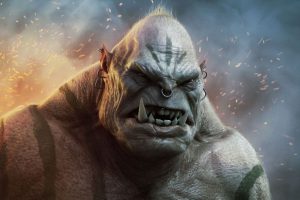
Most of this is actually true. As the descendants of Neanderthals, the Orc and Ogre races are markedly different from humans in terms of proportion. Known to have heavier brows, thicker jaws, and larger arms, the general Ogre-kin profile is more ape-like than average humans. However, much of their other features are a result of very specific evolution to survive a brutal era from a time before most Alters would come to exist.
First arising during the Late Pleistocene, the Orc races developed larger and heavier frames than their Neanderthal ancestors to deal with the massive beasts of their time. Combined with a set of new skin-tones that allowed them to blend in with their environments, and a set of impressive teeth mirroring those of their contemporaries the Smilodons, the Orcs and Ogres were able to better compete in a time when Megafauna were still fairly common. The skin-tones, in particular, were a huge advantage when they could begin to blend in during long hunts.
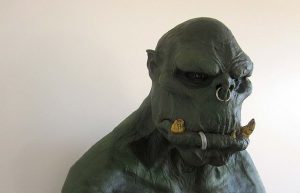
However, the stories of Orc and Ogre hygiene is simply a persistent stereotype based on a few extreme individuals today. Stories of fungus and putrid smells were often a result more of where the Orcs and Ogres lived than their actual grooming in most cases. Due to their traditions of living and hunting in swamp-lands and similar untamed regions, the tendency for these people to have been covered in dirt and grime from their hunting trips was more an occupational hazard than anything. Though true that Orc hygiene was quite lacking for most of human history, mostly due to their distrust of human civilizations and innovations like indoor plumbing, they have since adopted such modern conveniences when realizing it would help to hide their scents (and keep from bringing other scents home). In the modern day, though there are some hold outs (especially among Ogres), these people can be quite well groomed, particularly taking great care to trim and braid facial hair into various patterns.
Abilities
Mythology
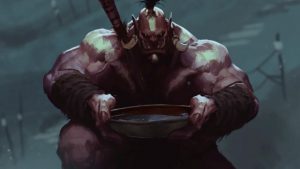
Orcs and Ogres are known primarily for their brutal power. Through their inhuman stature and sometimes disproportionate arms, they were capable of tremendous strength and stamina that made them nearly impossible to fight in a head on fashion. Often those who would confront them would be overpowered and killed in the process. And, as their appetites were voracious, these defeated people would likely be eaten shortly after.
However, these creatures were generally much stronger than they were intelligent and were easily outwitted in most situations. Few examples of truly intelligent Orcs or Ogres exist in lore and those who did demonstrate greater intelligence were generally the exceptions proving the rule. Because of this, most of these creatures, particularly under the Orc name, were hired as minions for greater armies making use of their strength rather than their minds. Essentially, they were incredibly powerful cannon fodder.
Alters
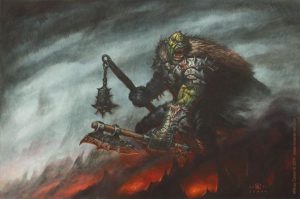
The stories of their uncanny strength was entirely true. Possessing incredibly dense bodies, the Orc and Ogre races maintained the strength of primitive primates that many hominids lost over time. Though their coordination is slightly limited as a result, the sheer power behind it makes up for the lack of finesse. As a result, Orcish crafts are known to be crude and unrefined in appearance.
However, despite their lack of refined crafts, Orcs and Ogres are no less intelligent than any other human. Rather, the chief differences between humans and these races is primarily cultural and Orcs who have taken time to learn f the outside world show themselves to be just as capable. This also results in them actually being better soldiers due to a tribal culture which has emphasized loyalty and cooperation for hunts. Ogre-kind, depicted as being expendable in many pieces of lore, were actually among the elites in the few human militaries that managed to recruit members of the race.
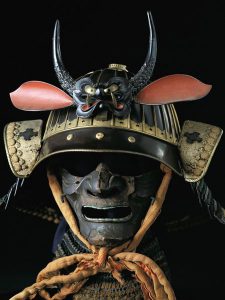
Other advantages of these people as soldiers and survivalist included unique evolutionary traits lacking in most humans. First, their skin-tones provide excellent camouflage in environments that would normally require face paint for humans. These skin-tones were utilized often in hunting before the modernization of Orc society. Second, Orcs and Ogres have an incredibly high tolerance against poisons, toxins, and contaminations – allowing the consumption of foods which would normally make humans incredibly ill or even result in death.
Behavior
Mythology
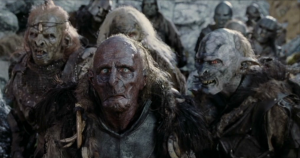
As inhuman creatures isolated from civilization, Orcs and Ogres have a tendency to fall to darker natures. Often involved with dark magics and creatures of inherent evil, Orcs and Ogres are known to be easily corrupted and even intoxicated by the power of their dark lords. Many examples, particularly from more recent lore, even achieved their current form through the influence of evil magic. This corruption wasn’t always willing, but the difference is generally moot by the time they have achieved their iconic forms.
Because of this corruption and their aforementioned lack of intelligence, Orcs and Ogres aren’t particularly brave or loyal to their masters. They require a strong, and sometimes even brutal, leader who can force them into line. Without these leaders, Orc ranks often break rapidly and with little resistance. Their loyalty to a leader is primarily driven by fear, and any time that they have reason to fear their enemy more than the leader will result in immediate retreat.
Their treatment within these armies is rarely good, either. Living off of minimal resources and rarely equipped by their masters, Ogre-kin are treated as expendable first and foremost. As a result, they often resort to eating whatever they can get, including others of their own kind of need be. Their cannibalistic attitudes seem to have no bounds and generally their limits are merely due to preferences. Supposedly, they find smaller creatures tastier by default.
Alters
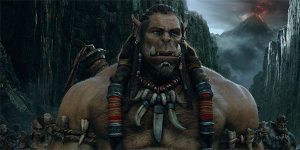
In truth, Orcs and Ogres live their lives deeply rooted in tradition. In fact, tied to their old ways, the primary difference between the races is that of how their society is structured. Ogres, by and large, are isolationists more likely to live as hermits. They’re most comfortable with their territories clearly marked and far enough out of the way to avoid tresspassers. Once encountered, their response generally depends on how the visitor reacts. If they’re lucky, this means the visitor simply walks away.
On the other hand, Orcs still maintain a semi-tribal nature even to this day. Though they have modernized with some hesitation, this has only changed the quality of their lives rather than the nature of it. They maintain tight groups, organizing themselves and doing what they can to survive. This is due, primarily, to the fact they have long lived in environments where few things could live alone, let alone thrive.

The stories of their being willing to eat anything are, as a result, quite true. Forced to live off of whatever they could, Orcs and Ogres have not had a great deal of resources available to them in the past and have never had the luxury of choices. As such, while cannibalism is not a preferred choice, they would not be opposed to it in the right situations.
This isn’t to say that they’re violent or savage by nature, however, but instead are best defined as survivalists. Ogre-kind is defined by simply getting by, by any means necessary, and this has resulted in them being standoffish to the rest of the world at best. However, this also means they’re quite peaceful in most circumstances, as confrontation generally leads to a lowered chance of survival. In the end, what these people want most of all is to simply be left alone. But those who do manage to get closer to them will soon realize…
There’s more to them than appearances.
(I write books. I also tweet. I too have layers.)







